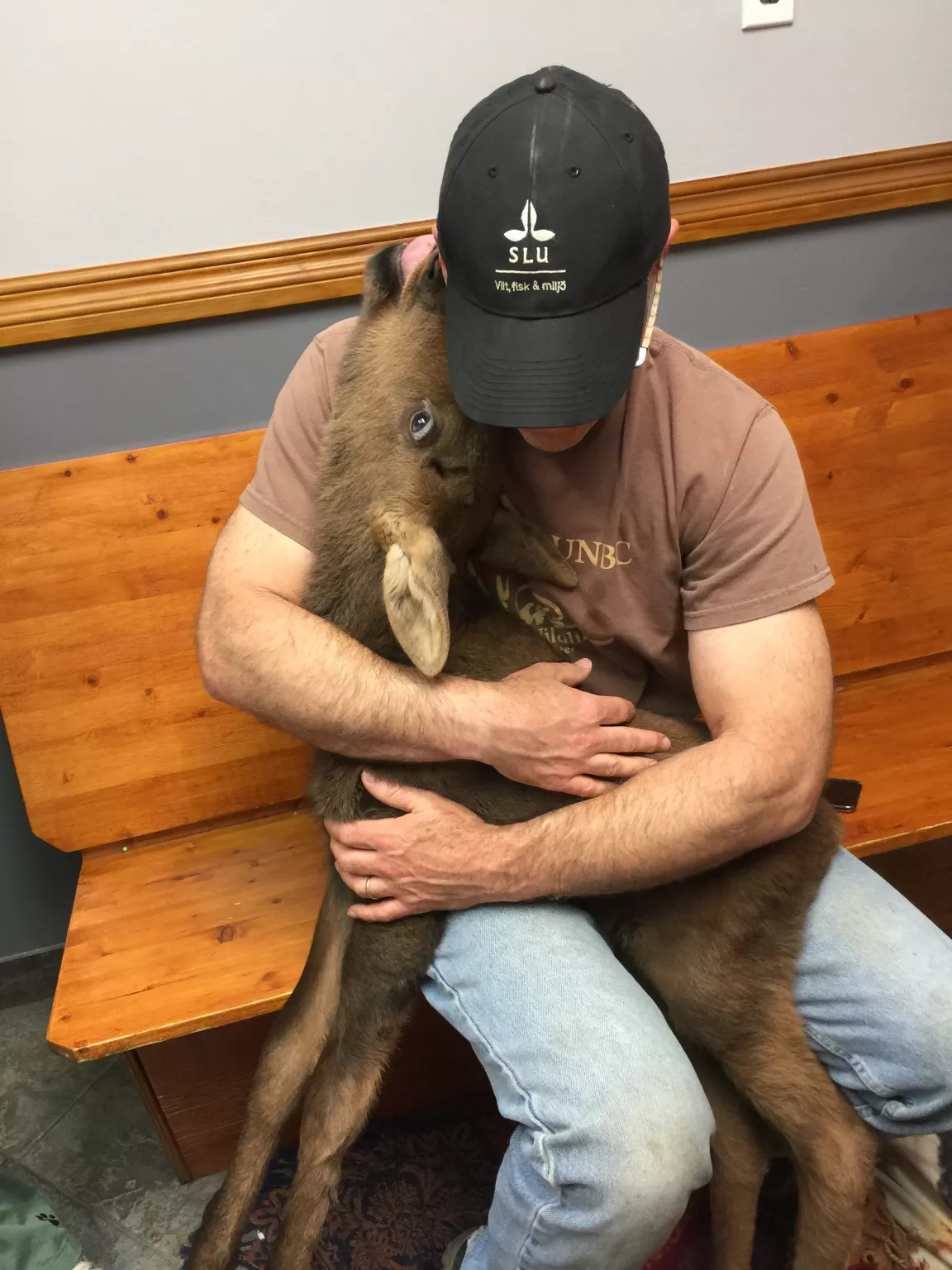UNBC Researcher, Grads Team Up to Save Orphaned Ungulates

University of Northern British Columbia Senior Lab Instructor Dr. Roy Rea not only helped save two moose calves on May 20, he may also have helped to further his research at the same time.
Rea has a research interest in finding ways to mitigate moose-vehicle collisions. In the aftermath of one such event the Victoria Day weekend, Rea co-ordinated the rescue of the neonatal moose and helped get them safely to the Northern Lights Wildlife Society in Smithers. Rea conducts some of his research with moose at Northern Lights and these two infant moose could be part of future studies.
The rescue story began with a text message on May 20 from Northern Lights co-owner Angelika Langen, who told him of a report of a moose-vehicle collision a few days prior that took the life of a cow moose, but left two surviving baby moose without their mother. Rea contacted the woman who made the report and discovered it was his former student and UNBC graduate Amanda Mjolsness.
Mjolsness had marked the location on Northwood Pulpmill Road where the collision occurred and Rea began the search for the calves.
“I was tramping through the bush, doing my best to call like a cow moose,” Rea recalled.
During the search, Rea met Joe Myatovic who in turn got his brother Phil to help look for the calves. Phil Myatovic eventually located them later that day, but they were in ill health and likely on the verge of death.
“They were beyond being on their last legs,” Rea said. “They were both laying down and neither had the energy to stand up.”
Rea took the calves to the Ospika Animal Hospital, where attending veterinarian and UNBC graduate Dr. Jennifer McLachlan helped get the two calves healthy enough for transport to the shelter in Smithers.
The rescue came weeks after Rea and Langen had begun talks about having a moose-calf capture team to help save calves from situations similar to what occurred on the weekend. Although no formal team is in place, the actions of Rea and the other volunteers who helped in the search and rescue demonstrated that such a partnership could be successful.
One of the studies Rea conducts at the Northern Lights Wildlife shelter looks at the type of roadside vegetation moose like to consume and what can be done to reduce the presence of that vegetation along the sides of roads. If the vegetation the moose like to eat is removed from roadsides or treated in such a way that it becomes less desirable, moose may be less likely to be on the road that would lower the probability of a collision.
Moose at the shelter are used for the feeding trials and Rea said it is possible the two rescued calves could become study subjects in the future.
With declining moose populations in British Columbia’s central interior, Rea said saving the calves helps to secure a future healthy moose population.
“Each and every one of these calves are worth their weight in gold,” he said.
Pictured: Dr. Roy Rea with one of the moose calves rescued after its mother died in a collision with a vehicle.